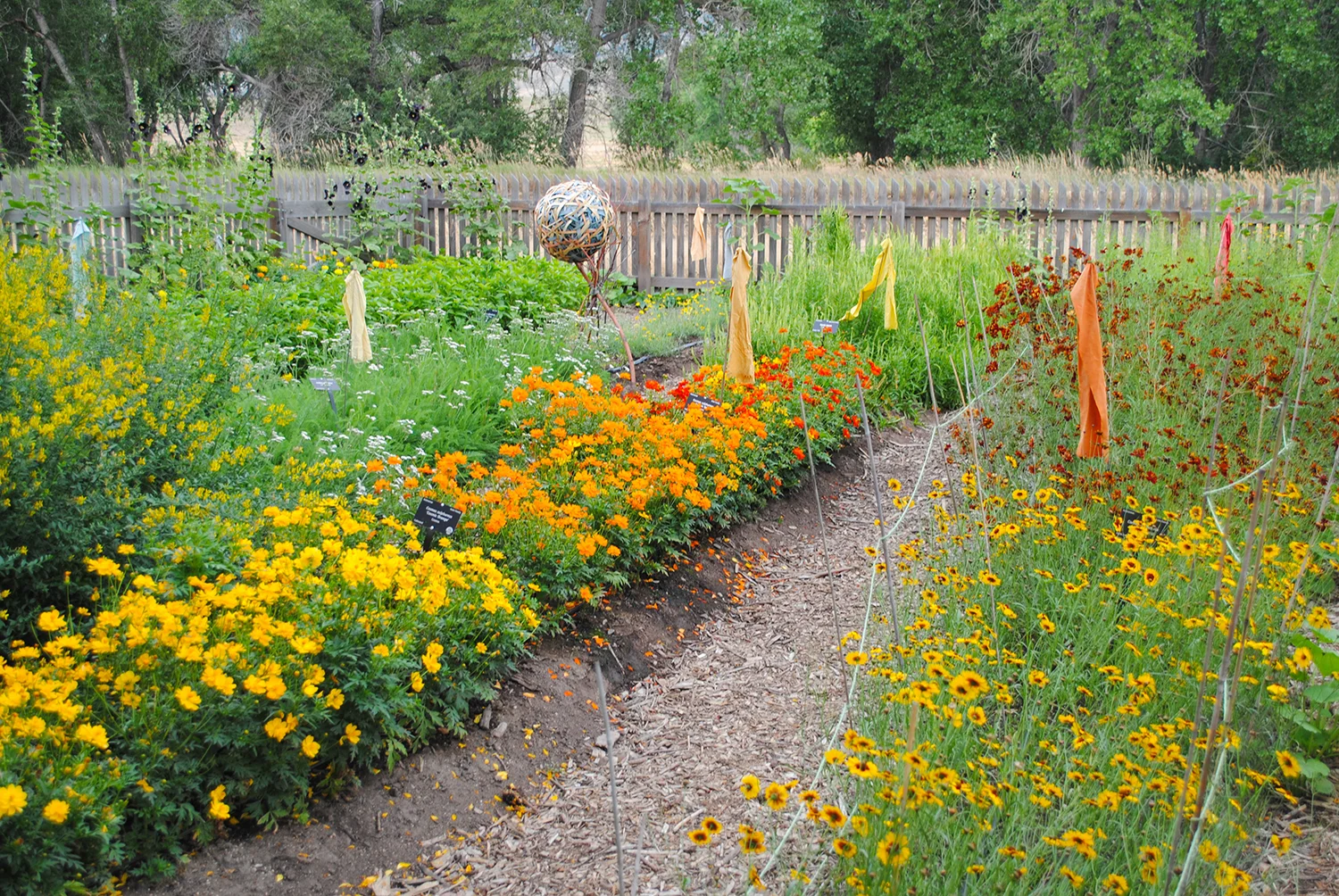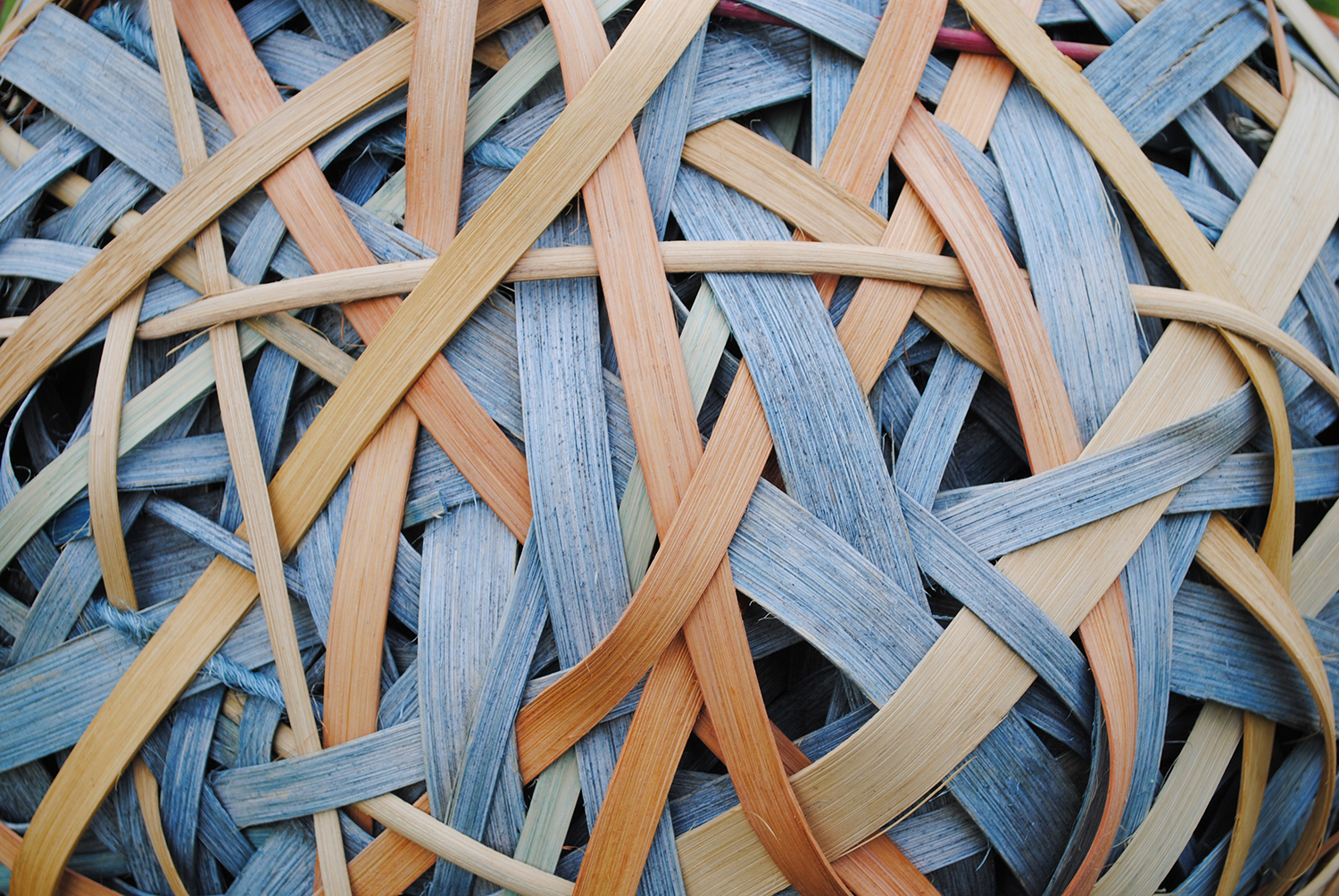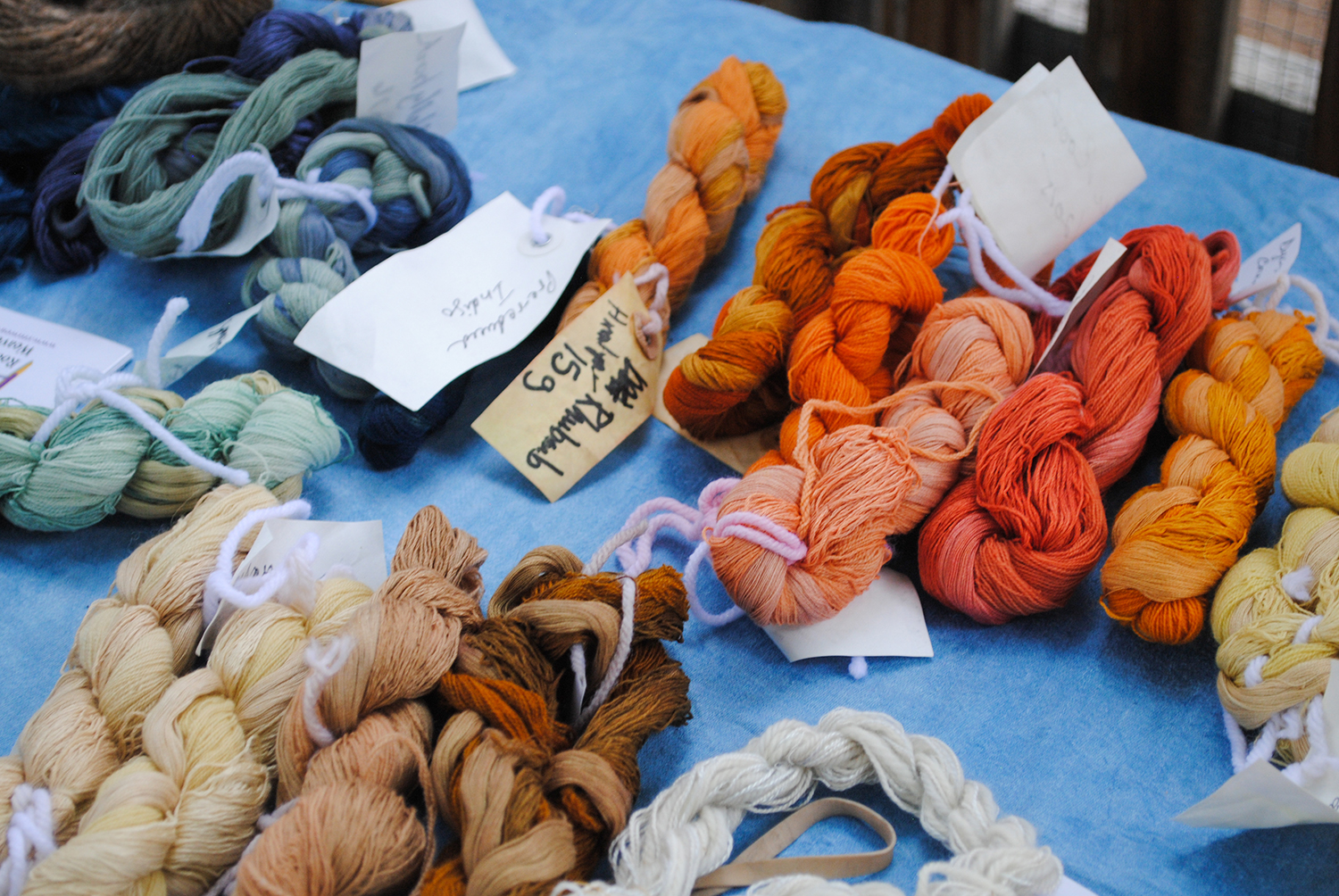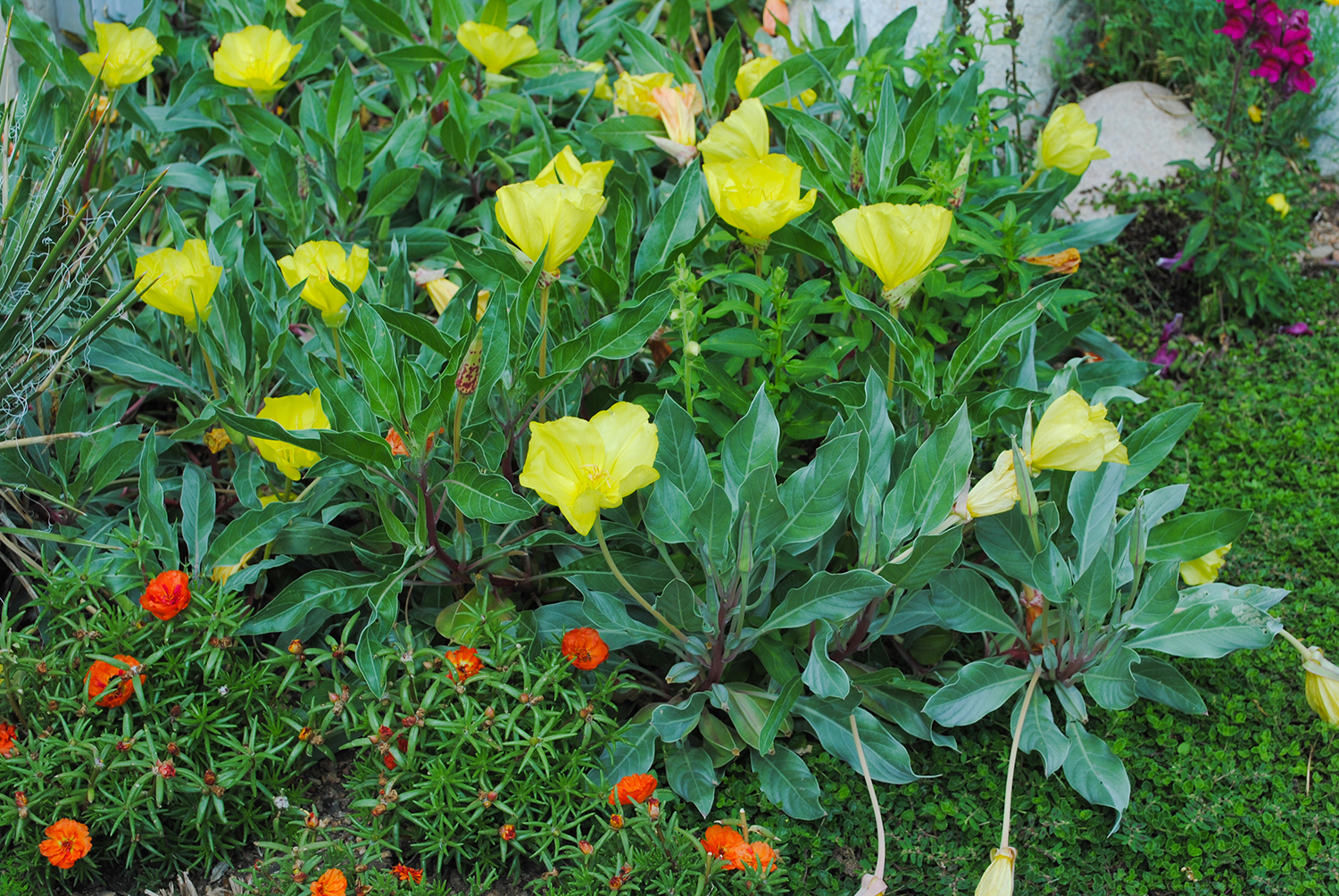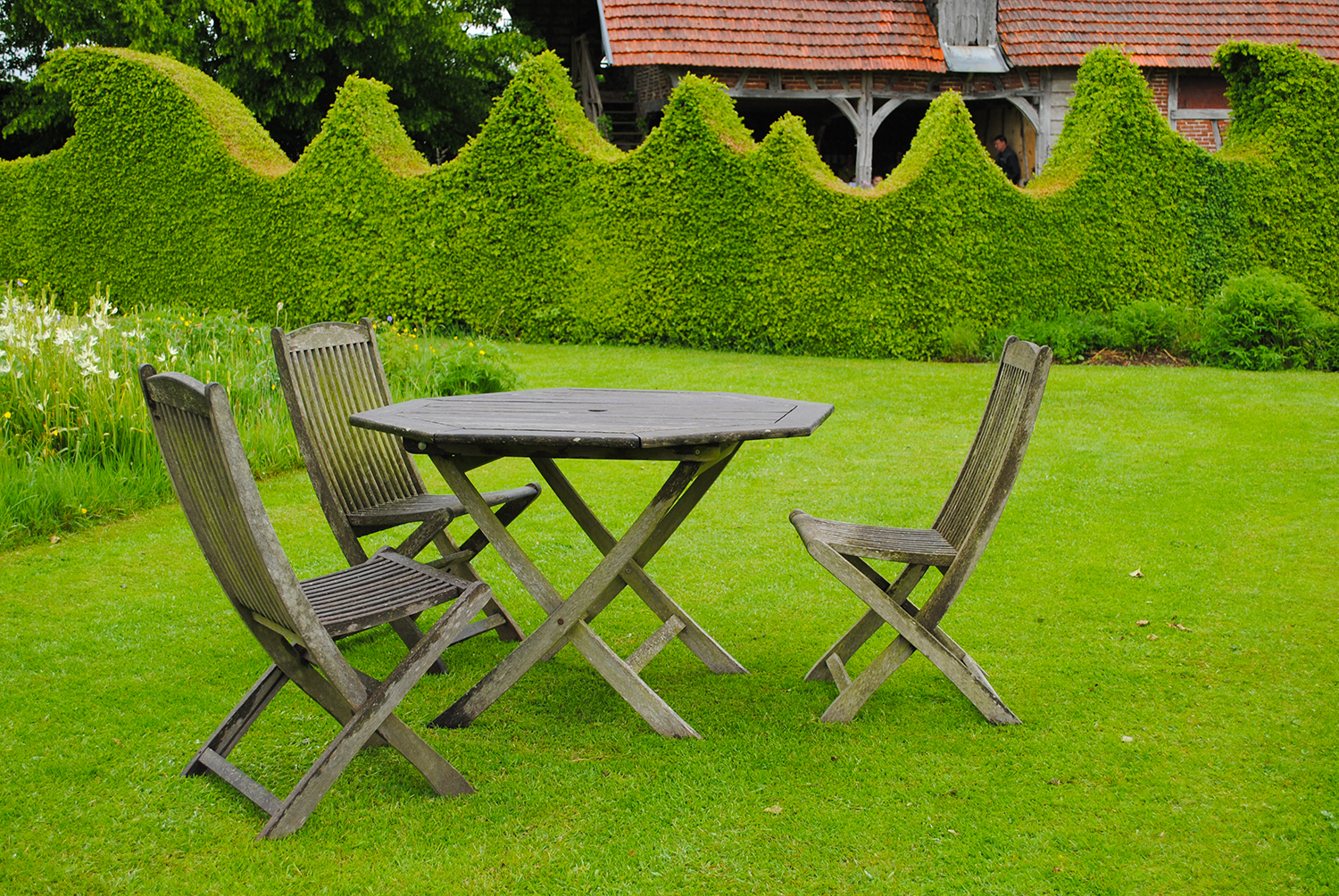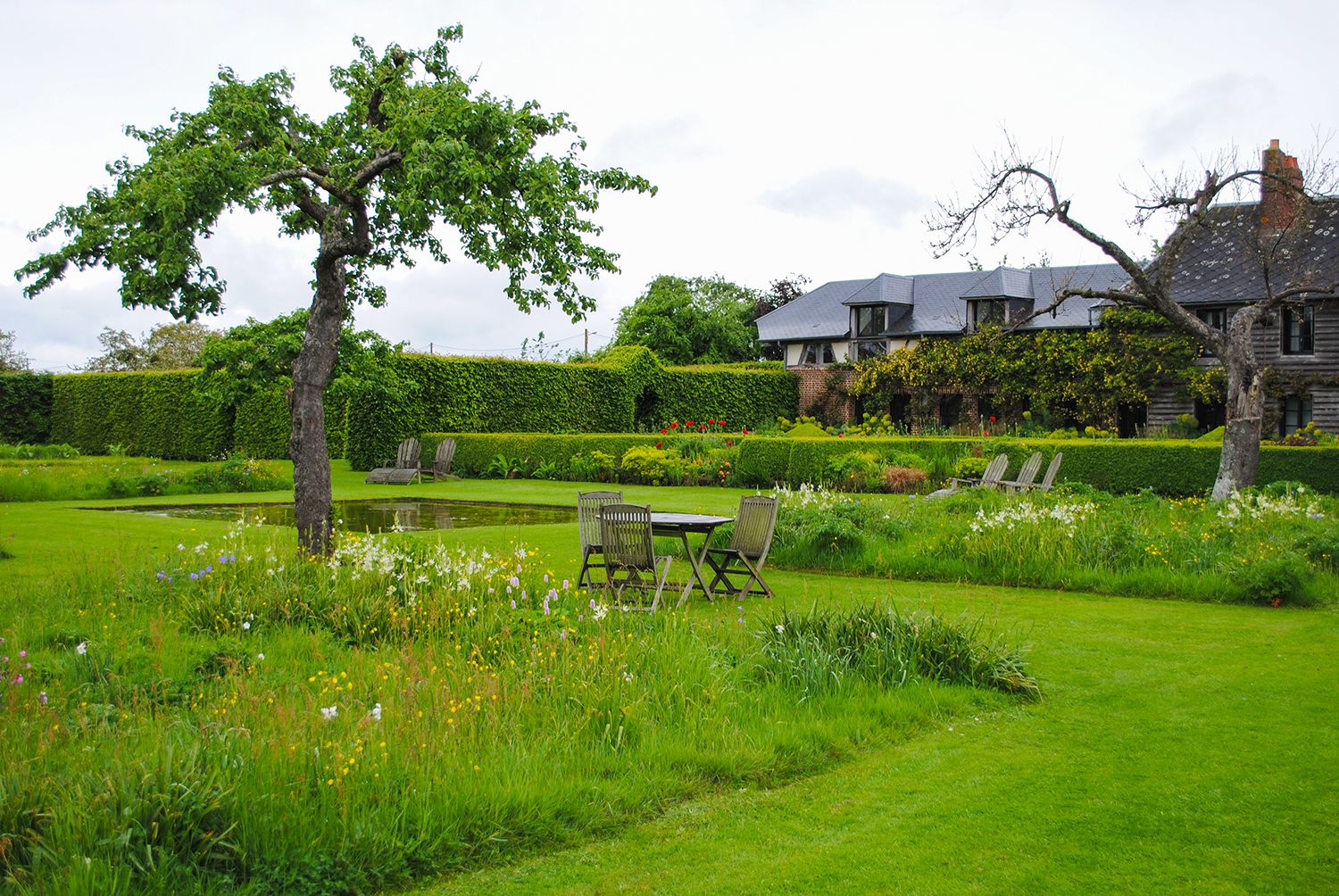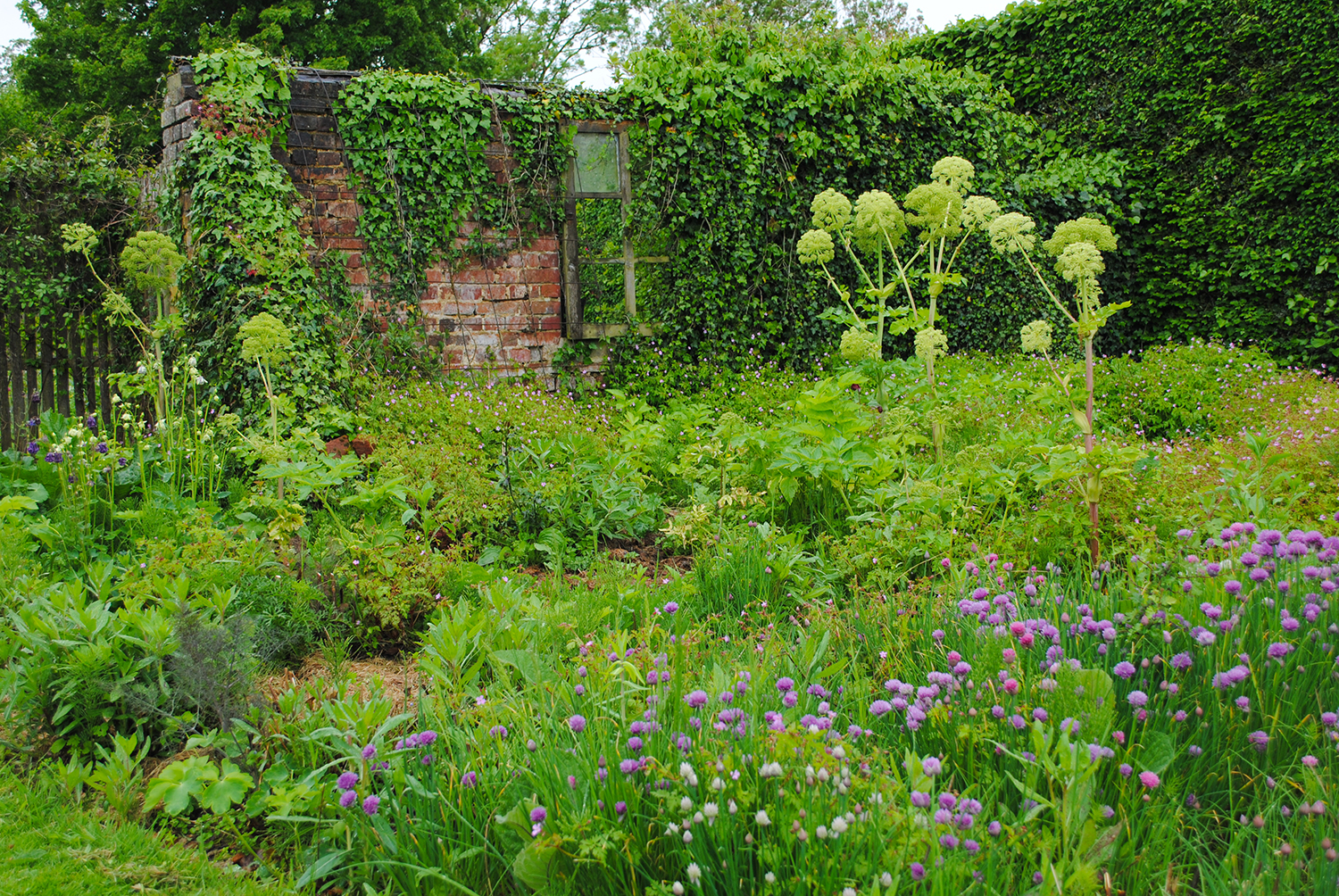During the Perennial Plant Association's symposium this year, we visited Chatfield Farms, a beautiful extension of the Denver Botanic Gardens with an agricultural twist. Here in the farm's productive, flat fields surrounded by towering mountains, we learned about agricultural education and food production that occurs in the greater Denver area. I was inspired by seeing the short grass prairie and other perennials planted, but one section of the garden really impressed me because it was different than anything I've ever seen in a garden.
Eventually we came to an area surrounded by a fence. I didn't know exactly what was inside, but from the table set up outside and the colorful cloths displayed, I quickly put two and two together. It was a demonstration garden for educating people about how fabrics are dyed.
The Chatfield Farms dye garden featured a variety of common garden plants that can be used to color-change clothes.
I immediately fell in love with it! The whole concept. I'm always looking for new ways to connect people to horticulture, and right now plants fulfilling utilitarian purposes are a gateway for reaching people who aren't horticulturists or gardeners. Also, kids these days seem to change their hair color every time they wash it, and the link between dyeing your locks and dyeing your socks could could be another connection with young people.
Using plants as dyes is always something that I've know can be done. Colors have come from plants and been used for thousands of years, but to see it so eleqantly displayed was engaging.
The carpeting Coreopsis matches the drapes. Simple scraps of cloth hung near each color's source offers a teachable moment.
A sphere made from dyed strips of wood demonstrates that the craft isn't just limited to cloth.
A close-up of the colorful wood slivers.
A variety of threads dyed from a plethora of plant pigments.
Indigo. Cerulean. Salmon. Russet. The blue- and pink- colored threads were my favorites, and I was amazed to realize that all these colors can come from nature.
The educational aspect of the garden really enchanted me. As a professor of horticulture at an agricultural college, it made me ask how can we replicate this approach throughout the gardening and natural world because the experience left me dyeing to learn more.
